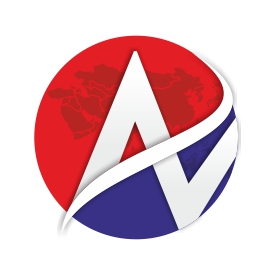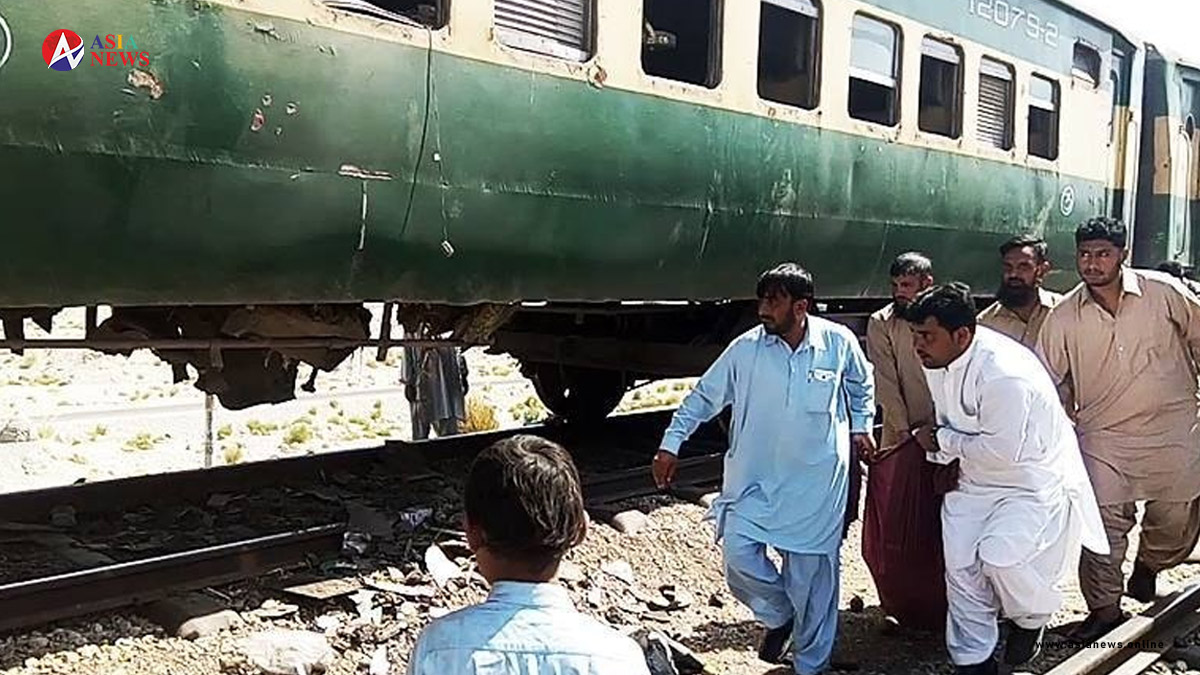Earthquake News: Strong earthquake strikes Caribbean Sea, tsunami warning issued
Earthquake News: Almost 90% of the Caribbean is at risk of earthquakes and tsunamis. It’s vital to keep up with the latest warnings. This is a big worry for both locals and visitors, as earthquakes and tsunamis pose a huge threat.
Understanding the risks of seismic activity in the Caribbean is key. We must take steps to protect ourselves. With the warning in place, staying informed is more crucial than ever.

By focusing on disaster preparedness and staying updated, we can reduce risks. Together, we can make our community safer and more resilient.
Breaking: Current Status of Caribbean Earthquake and Tsunami Warning
The Caribbean is at risk for earthquakes and tsunamis because of its fault lines. The warning status is watched closely. This is to keep everyone safe with earthquake safety measures.
Recent caribbean seismic events show how crucial it is to be ready for disasters. The earthquake’s location and size are being checked. This helps figure out how it might affect the area.
Location and Magnitude Details
The earthquake hit in the Caribbean Sea, with a 6.5 magnitude. This has led to a tsunami warning for some coasts. People are being told to leave low-lying areas.
Affected Areas and Evacuation Orders
Many Caribbean islands are affected, with orders to leave coastal areas. People are told to follow earthquake safety measures. They should go to higher ground or safe zones.
Current Warning Status (Earthquake News)
The warning status is updated often. You can find the latest on government websites and social media. It’s important for everyone to stay updated on tsunamis in the Caribbean to stay safe.
Understanding the Seismic Event
Earthquakes and tsunamis are major disasters for coastal areas in the Caribbean. The region’s geology, with many tectonic plates, leads to these events. Knowing about seismic events helps communities prepare and respond.
Also Read: Sam Altman & the DeepSeek AI model
The tsunami alerts in the Caribbean aim to spot tsunami signs early. They warn coastal areas, saving lives and lessening damage. Scientists study these events to improve warning systems.
Key things to know about seismic events include:
- Plate tectonics: The Caribbean’s tectonic plates moving can cause earthquakes and tsunamis.
- Earthquake magnitude: The earthquake’s size affects the tsunami’s severity.
- Warning systems: Good warning systems, like tsunami alerts, are key to saving lives.
Understanding seismic events helps us prepare for and respond to earthquakes and tsunamis in the Caribbean. This includes investing in monitoring systems and educating coastal communities about the risks.
It’s vital to keep studying seismic events in the Caribbean. This helps us understand these complex phenomena better. It also helps us develop more effective ways to reduce their impact.
| Event | Location | Magnitude |
|---|---|---|
| Earthquake | Caribbean | 7.0 |
| Tsunami | Coastal communities | 10 meters |
Impact on Coastal Communities
Coastal areas in the Caribbean face big risks from earthquakes and tsunamis. Natural disaster preparedness is key here. The area’s shape and location make it more likely to be hit by these disasters. So, it’s important to have good caribbean tsunami risk assessment and earthquake safety measures.
When an earthquake and tsunami hit, the damage is huge. Buildings get destroyed, people lose their homes, and lives are lost. After such a disaster, quick action is needed. This includes finding missing people, giving food and shelter, and medical help.
Immediate Effects
Earthquakes and tsunamis can really hurt coastal communities. The waves can be up to 30 feet high, flooding everything and damaging buildings. The cost of all this damage can be very high, running into millions of dollars.
Economic Implications
The economic damage from these disasters can last a long time. It can hurt people’s jobs and make the economy unstable. The tourism industry, which is big for the economy, can be hit hard. This leads to job losses and economic problems.
Emergency Response Measures
Quick and effective emergency actions are vital. Communities need a good plan, regular drills, and well-prepared emergency services. This helps to lessen the disaster’s impact.
Tsunami Formation and Propagation
Tsunamis happen when a lot of water is pushed out of place, often by caribbean seismic events. The way tsunamis form and move is complex. It involves tectonic plate movements and water displacement. Earthquake monitoring systems are key in spotting seismic activity and warning of tsunamis early.
The tsunami alerts caribbean area is very at risk because of its location. Knowing how tsunamis form and move is vital for predicting and getting ready for them. Important factors include:
- Seismic activity: Tectonic plate movements can push a lot of water, creating a tsunami.
- Ocean currents: Currents in the ocean can change a tsunami’s speed and direction.
- Coastal geometry: The shape and depth of the coastline can make a tsunami more severe.
By understanding these factors and using earthquake monitoring systems, we can better predict and prepare for tsunami alerts caribbean. This knowledge helps save lives and lessen the damage from these disasters.
Emergency Response Protocols in Action
In the face of a caribbean earthquake and tsunami warning, quick action is key. Emergency plans help save lives and reduce damage. Being ready for natural disasters is crucial for communities to act fast and well.
Earthquake safety steps, like drills and emergency kits, lower injury and death risks. These steps are important.
Also Read: Shackled on U.S. Flights! Heartbreaking Tale of Deported Indians
Government agencies are vital in disaster response. They team up with global groups to help out. They keep an eye on relief efforts to ensure aid reaches those in need.
Government Agency Responses
Government teams jump into action fast. They offer emergency help and support to hit communities. Their work includes search and rescue, food, shelter, and medical care.
International Coordination Efforts
Working together is key in disaster response. Groups like the United Nations and the Red Cross join forces. They aim to provide aid and support to affected areas.
Relief Operations Status
Relief efforts are always being watched and updated. This includes tracking aid delivery, affected people, and recovery progress.
- Creating an emergency kit with essential supplies such as food, water, and first aid materials
- Developing a family emergency plan, including a communication plan and evacuation routes
- Staying informed about weather conditions and emergency alerts
By taking these steps, people and communities can lower injury and death risks. Being ready for natural disasters is vital. It ensures communities can respond quickly and effectively to emergencies.
| Emergency Response Protocols | Government Agency Responses | International Coordination Efforts |
|---|---|---|
| Evacuation drills | Search and rescue operations | Provision of aid and support |
| Emergency kits | Provision of food and shelter | Medical aid |
Caribbean Seismic Monitoring Systems
Earthquake monitoring systems are key in the Caribbean. They help predict and prepare for earthquakes and tsunamis. The importance of these systems is huge. They give vital info for tsunami alerts and lessen the impact of seismic events.
Investing in these systems has many benefits:
- They detect seismic activity early.
- They accurately predict tsunami alerts.
- They improve emergency response and preparedness.
With these systems, the Caribbean can better face earthquakes and tsunamis. This saves lives and reduces damage.

As the Caribbean invests more in seismic monitoring, it’s crucial to focus on effectiveness and accuracy. This ensures the safety and well-being of communities.
Safety Guidelines for Coastal Residents
Coastal residents in the Caribbean face risks from earthquakes and tsunamis. It’s vital to have safety plans ready. Knowing the tsunami risk helps residents stay safe.
Having an evacuation plan is crucial. Know the routes, a meeting spot, and stay updated. Keep emergency kits with food, water, and first aid. Also, have a battery radio and a whistle for help.
Emergency Kit Essentials
- Water (at least 3 gallons per person)
- Non-perishable food
- First aid supplies
- Battery-powered radio
- Whistle to signal for help
By following these guidelines, coastal residents can lower their risk. Stay informed about tsunami and earthquake safety. This ensures you’re ready for any disaster.
Communication Protocols
Staying informed and communicating are key during disasters. A battery radio keeps you updated. A whistle signals for help if trapped.
| Item | Quantity |
|---|---|
| Water | 3 gallons per person |
| Non-perishable food | 3-day supply |
| First aid supplies | Basic kit |
Historical Context: Previous Caribbean Tsunamis
The Caribbean has seen many tsunamis, causing great harm. It’s key to know about these past events to get ready for the future. Caribbean seismic events have led to these tsunamis, showing the need for good earthquake monitoring systems.
Looking back, tsunamis in the Caribbean were often set off by strong earthquakes. The damage was worse because of poor warning systems and lack of emergency plans. By studying these past events, we can better handle future caribbean seismic events.
Some big tsunamis in the Caribbean include:
- The 1946 Dominican Republic tsunami, caused by an 8.1 earthquake
- The 1953 Kingston, Jamaica earthquake and tsunami, leading to a lot of damage and deaths
These examples show we need better earthquake monitoring systems and emergency plans to lessen the impact of caribbean seismic events. By understanding the history of tsunamis in the Caribbean, we can make the region safer and more resilient.
It’s vital to learn from past disasters and keep getting better at handling caribbean seismic events. This means investing in earthquake monitoring systems and emergency plans. We also need to teach people about the dangers of tsunamis in the Caribbean.
| Year | Location | Magnitude | Impact |
|---|---|---|---|
| 1946 | Dominican Republic | 8.1 | Widespread destruction and loss of life |
| 1953 | Kingston, Jamaica | 7.3 | Significant damage and casualties |
Regional Preparedness and Infrastructure
Regional preparedness and infrastructure are crucial for dealing with natural disasters like earthquakes and tsunamis in the Caribbean. A strong caribbean earthquake and tsunami warning system is vital. It helps in evacuating people quickly and saves lives. Being ready for natural disasters is key to lessening their impact.
Effective regional preparedness involves many steps. This includes early warning systems, building codes, and community plans. Early warning systems send alerts early, helping people prepare and move to safety. Building codes make sure buildings can stand up to earthquakes and tsunamis. Community plans help everyone work together during emergencies.
Key Components of Regional Preparedness
- Early warning systems for caribbean earthquake and tsunami warning
- Building codes and standards for earthquake-resistant construction
- Community response plans for evacuation and emergency response
Investing in regional preparedness and infrastructure can make the Caribbean safer. It’s important for governments, organizations, and people to work together. This way, we can all help make the region safer from earthquakes and tsunamis.
Benefits of Regional Preparedness
| Benefit | Description |
|---|---|
| Reduced Loss of Life | Timely evacuation and warning systems minimize the risk of casualties |
| Minimized Property Damage | Earthquake-resistant construction and building codes reduce the risk of property damage |
| Effective Emergency Response | Community response plans enable a coordinated and effective response to disasters |
Conclusion: Moving Forward and Staying Prepared
The Caribbean has faced recent seismic events, showing its vulnerability to earthquakes and tsunamis. Yet, there’s hope for a better future. By focusing on resilience and improving our readiness, we can face these challenges head-on.
Investing in advanced monitoring systems is key. These tools help us predict and prepare for disasters. This way, we can lessen the harm to coastal areas.
Earthquake monitoring systems are vital. They give us early warnings, helping us act fast to save lives. Working together and sharing knowledge will help the Caribbean prepare for future earthquakes.
We must stay alert and keep improving our emergency plans. Engaging with local communities is crucial. This way, we can all work together to protect ourselves and our families.
By being proactive, we can make the Caribbean stronger. We can face nature’s power and come out even stronger. Let’s work together for a safer, more resilient future.








